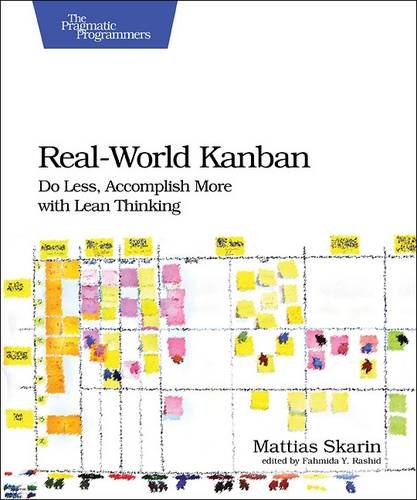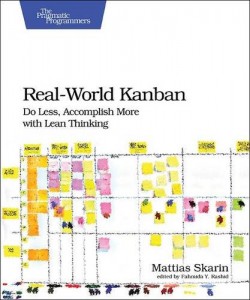Real World Kanban – Reviews and Anectdotes

Real-World Kanban by Mattias Skarin, was published in 2015 by Pragmatic Programming. Here are a few reviews from people who have read the book as well as some anecdotes.
Reviews – what people have said about Real World Kanban
”The best books on Kanban come from North European authors. This little book, well illustrated and witty, brings its share of novelty and the appendix contains a few treasures of its own as to how to foster the novelty cycle and bring concept ideas to the table. It is a practical book from shared experiences. A book you would find on a table in a development project and not stacked in your book shelf once you are done with it.”
– Daniel Doiron, aka ”The Agile Agonist”
”Real-World Kanban is a great collection of case studies plus a practical summary of Lean principles for software development. It shows how adjusting development to focus on flow and feedback greatly improves efficiency by increasing the value – rather than the quantity – of the output. The book is loaded with examples of well-conceived visualization that provides the situational awareness vital for success in fast-moving environments.”
– Mary Poppendieck, aka ”Queen of Lean”
”It’s very clear and straight forward – and just the right length. Long enough to no be _just_ an e-book but not so long that nobody has time to read it. Well done!”
– Jon Terry, COO, LeanKit
”This is a very practical and to-the-point book on how to implement the Kanban method. The four case studies turn theory into practice in a very practical and to the point way. This is a must-read for managers interested in improving end-to-end product development.”
– Håkan Forss Agile Coach, King
”If you want to know what Kanban looks like in practice, this book is for you!”
– Arne Rook, Kanban Pioneer aka ”Dr. Rock”, Jimdo
”Mattias Skarin’s new book ”Real World Kanban” is almost 100% about practice. The book does start off with a very brief introduction to Kanban and Lean concepts, but then swaps to storytelling where Mattias Skarin tells real world stories of how Kanban was applied in four different settings. The stories are told in a straightforward way, describing not only what was done, but also why and how things evolved over time. The book is a quick and easy read that offers lots of ideas and inspiration for anyone who’s interested in Kanban, regardless of level. The idea to write a book with storytelling in focus is great in itself and well executed. The storytelling format also gives a nice insight into Mattias Skarin’s work as a Kanban coach.”
– Martin Bäcklund, Lean/Agile Coach
Anectdotes
Before these case studies, I had worked as a Lean and Agile coach for a number of years, helping teams and departments improve. We did great improvements and I learned a lot. But solving problems on site is one thing, training people to solve problems themselves is quite another. The question that always lingered on my mind was, “Have I really trained people to make improvements on their own initiative?
So when I started working with these cases, I tried a different approach. What I wanted to see and learn was:
- How does improvement work in a traditional company which carries legacy?
- How far can people make improvements on their own if they don’t have an Agile coach there full time?
- How should I train leaders and teams so that they can continue to make improvements themselves after I am gone?
To be fair, there is one outlier, the first couple of weeks during “Saving a derailing project”, I worked with the teams and the PO on site. But in all the other cases, the managers and the teams in place basically ran the show.
What did I learn? If you have one or two people there who care and want to make a difference, they will turn the ship around if you give them a way to visualize and communicate what is happening, a set of behaviors which enables them to move what they see into action and a confidence in their own problem solving ability. The first mental leap is the most counterintuitive: Thinking and experimenting beats process. Whoa, isn’t this about process? No, it’s about learning and improving!
The key issue in all the case studies was improving across organizational borders, which is why it matters so much that top management emphasize improving end-to-end (and not just my little part).
There is always more than one solution to any problem. So the solution adopted in each case study is not the only one, it just happened to be the approach which worked in that particular scenario. What I am most happy about is that each organization continued to make improvements on their own after I left!
Where to buy the book
- The book is available at Amazon.
